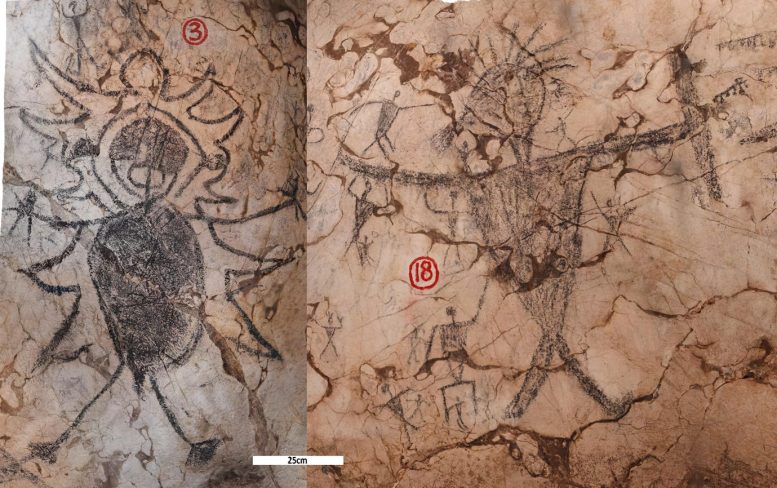
Researchers have successfully dated the charcoal drawings in Gua Sireh Cave in Sarawak, revealing stories of Indigenous resistance to frontier violence between AD 1670 to 1830. The artwork, created with bamboo charcoal, portrays scenes of hunting, fighting, and dancing, shedding light on the region’s history of conflict and colonization. Above is the dated rock art. Credit: Andrea Jalandoni
Researchers from the Griffith Centre for Social and Cultural Research, in partnership with The Sarawak Museum Department, have become the first to date drawings of Gua Sireh Cave in Sarawak, uncovering a sad story of conflict in the process.
The renowned Gua Sireh limestone cave, located in western Sarawak on the island of Borneo in Malaysia, boasts numerous charcoal drawings on its chamber walls, drawing hundreds of visitors annually.
Approximately 55km southeast of Sarawak’s Capital, Kuching, the site is managed by the Bidayuh (local Indigenous peoples) in collaboration with The Sarawak Museum Department, with the drawings depicting Indigenous resistance to frontier violence in the 1600s and 1800s AD.
Radiocarbon ages for the drawings date them between 280 and 120 cal BP (AD 1670 to 1830), corresponding with a period of increasing conflict in the region when the Malay elites controlling the region exacted heavy tolls on Indigenous hill tribes, including the Bidayuh.
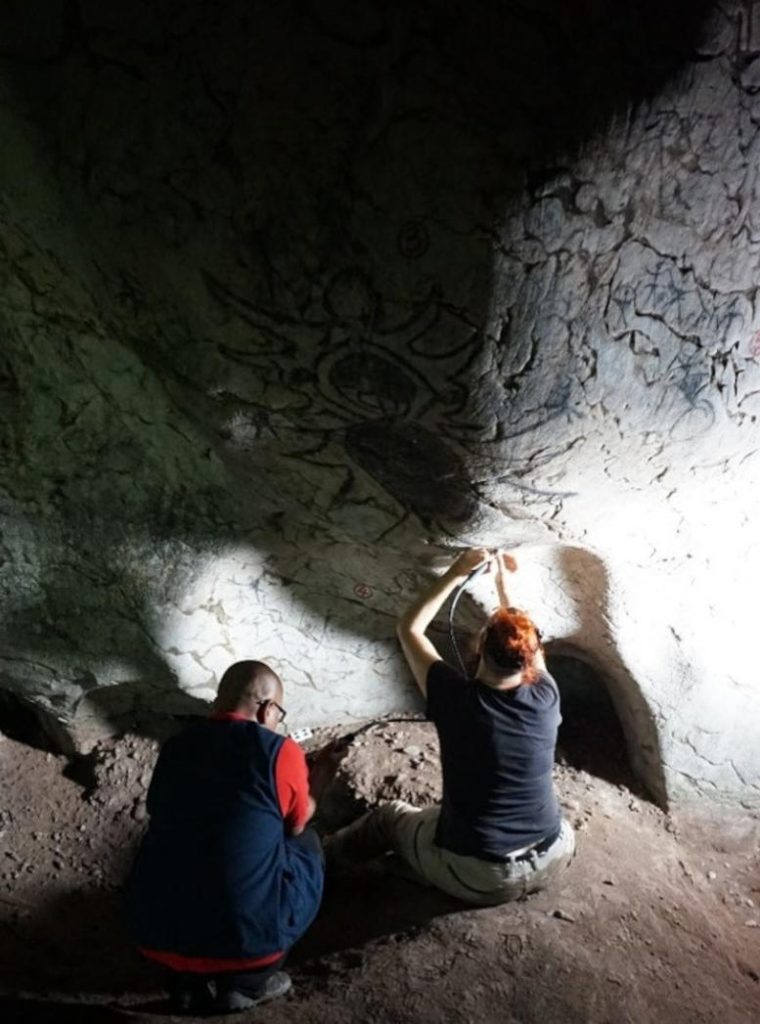
Mohammad Sherman Sauffi William from the Sarawak Museum Department and Jillian Huntley harvesting sample GS3. Credit Paul S.C. Taçon.
To the best of the team’s knowledge, these radiocarbon dates are the first chronometric age determinations for Malaysian rock art. Study co-lead, Dr Jillian Huntley said the first step was establishing what had been used to make the drawings.
“We wanted to confirm the images were drawn with charcoal, as there are a limited number of substances you can actually radiocarbon date,” she said.
“We were looking at the decay isotopes of carbon, which meant the material had to be carbon-bearing, and our analyses (with collaborator Dr Emilie Dotte-Sarout at the University of Western Australia) determined charcoal from different species of bamboo had been used. Being drawn on limestone, they’re remarkably well preserved.”
Digital fly-through of Gua Sireh Cave. Credit: Andrea Jalandoni
The art at Gua Sireh is part of a wider distribution of black drawings found from the Philippines through central Island Southeast Asia across Borneo and Sulawesi to Peninsular Malaysia. They are thought to be associated with the diaspora of Austronesian-speaking peoples.
Previous dating work, also led by the Griffith Centre for Social and Cultural Research, has established similar drawings in the Philippines that were made as early as ~3500 cal BP and ~1500 cal BP in southern Sulawesi.
“Black drawings in the region have been made for thousands of years,” Dr Huntley said.
“Our work at Gua Sireh indicates this art form was used up to the recent past to record Indigenous peoples’ experiences of colonization and territorial violence.”
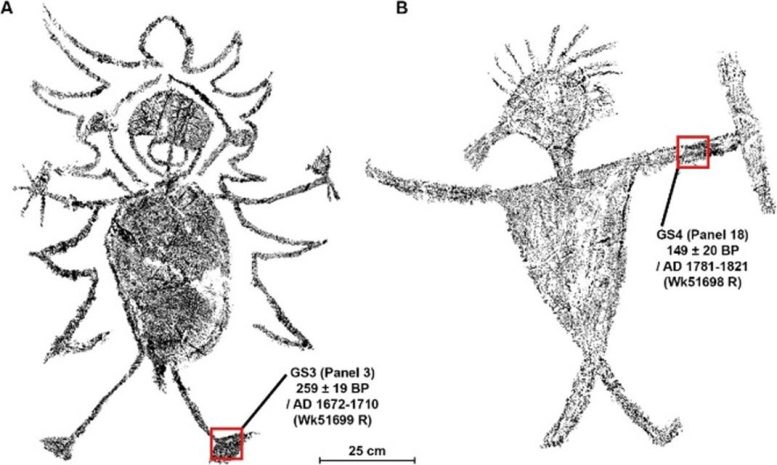
An infographic showing the dated rock art. Credit: Digital tracing and design by Lucas Huntley.
Co-lead Distinguished Professor Paul Tacon said the team knew from previous work in the region that northwest Borneo’s rock art (the Malaysian states of Sabah and Sarawak) is dominated by drawings of people, animals, ships, and abstract geometric/linear design.
“At Gua Sireh, people are drawn wearing headdresses – some armed with shields, knives, and spears, in scenes showing activities such as hunting, butchering, fishing, fighting and dancing,” he said.
“We had clues about their age based on subjects such as introduced animals, but we really didn’t know how old they were, so it was difficult to interpret what they might mean.”
Bidayuh descendant and curator at The Sarawak Museum Department Mr. Mohammad Sherman Sauffi William said understanding of the dates had been informed by the oral histories of the Bidayuh who have continuing custodial responsibilities over the site today.
“The Bidayuh recall Gua Sireh’s use as a refuge during territorial violence in the early 1800s when a very harsh Malay Chief had demanded they hand over their children,” he said.
“They refused and retreated to Gua Sireh, where they initially held off a force of 300 armed men trying to enter the cave from the valley about 60 meters below.
“Suffering some losses (two Bidayuh were shot and seven taken prisoner/enslaved), they saved their children when most of the tribe escaped through a passageway at the back of the largest entrance chamber which leads hundreds of meters through the Gunung Nambi limestone hill.
“The figures were drawn holding distinctive weapons such as a Pandat which was used exclusively for fighting or protection, as well two short-bladed Parang Ilang, the main weapons used during warfare that marked the first decades of white rule in Borneo.”
The study was funded by the Australian Research Council and Griffith University.

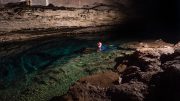
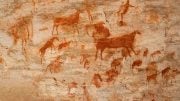

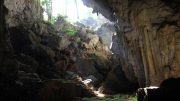
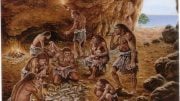
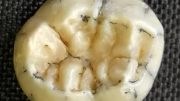
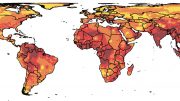

350 years is ancient?